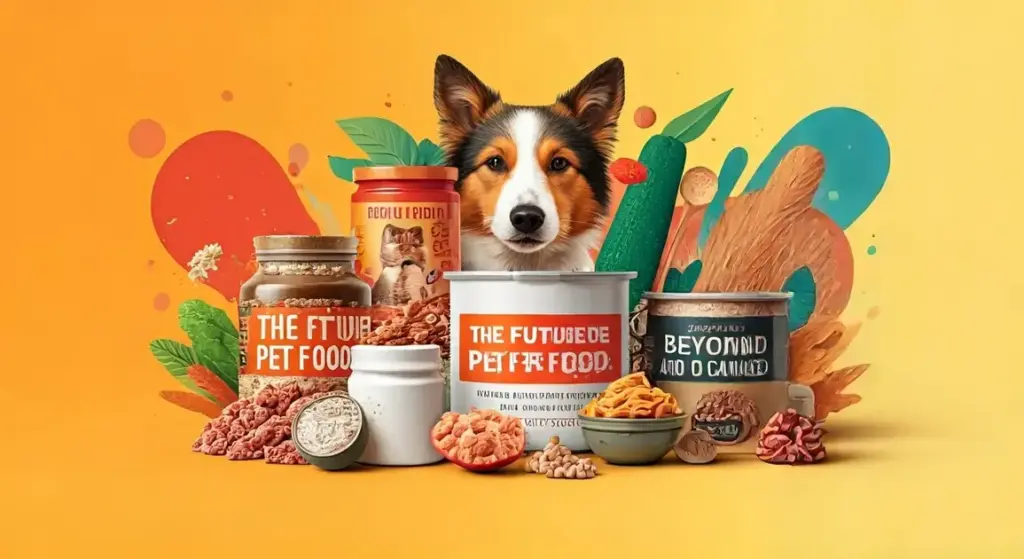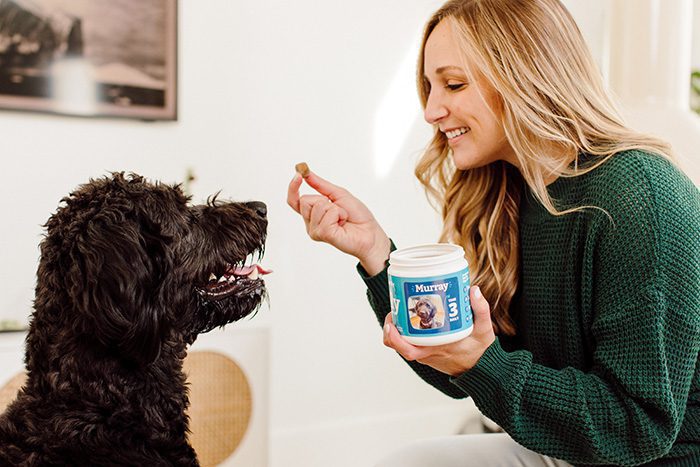For decades, the clink of kibble hitting a metal bowl was the universal soundtrack of pet ownership. Dry pellets and canned mush dominated shelves, designed for convenience rather than nutrition. However, the future of pet food is evolving rapidly. A quiet revolution is unfolding in pet food aisles and online marketplaces. As pets transition from “animals” to cherished family members, their meals are being reimagined prioritizing health, sustainability, and cutting-edge science over outdated formulas.
From Backyard Bowls to Bespoke Meals
The shift began when pet owners started asking questions once reserved for human food: What’s really in this? Where did it come from? Concerns over mysterious byproducts, recalls, and the environmental toll of mass production sparked demand for transparency. Meanwhile, three seismic trends emerged:
- The Humanization Effect
Pets now enjoy birthday cakes, spa days, and Instagram accounts. It’s no surprise their diets mirror our wellness obsessions think free-range chicken, antioxidant-rich blueberries, and probiotics. A 2023 survey found 62% of millennials would rather skip a meal themselves than feed their dog low-quality food. - The Sustainability Awakening
With livestock farming accounting for 14.5% of global emissions, eco-conscious owners seek alternatives to beef-heavy diets. Startups now repurpose “ugly” vegetables rejected by supermarkets into nutrient-dense pet meals, reducing farm waste by up to 40%. - Tech-Driven Customization
Imagine a world where your cat’s collar tracks her activity levels, and then adjusts her dinner portions via an app. That future is already here. Companies use DNA kits to craft breed-specific recipes, while 3D-printed treats address dental health issues in aging pets.
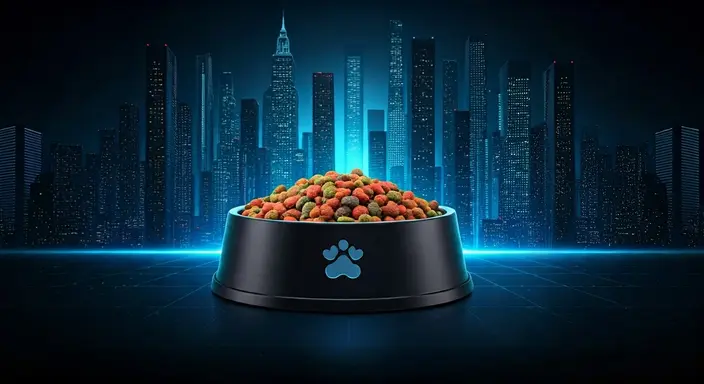
The New Dinner Table Dilemma
But innovation brings complexity. Walk into any pet store, and you’ll face a dizzying array of options:
- Freeze-dried venison from New Zealand
- Cricket-protein kibble boasts a carbon footprint 80% smaller than beef
- Meal subscriptions with pre-portioned, human-grade salmon and quinoa
Suddenly, “feeding the dog” feels less like a chore and more like navigating a Michelin guide. This explosion of choice reflects deeper societal shifts our pets aren’t just eating better; they’re becoming catalysts for reimagining food systems.
The Changing Landscape of Pet Food
Gone are the days when pet food choices were limited to a single aisle of identical brown pellets. Today’s pet food industry is undergoing a metamorphosis, driven by owners who demand the same level of care for their pets’ meals as they do for their own. Let’s unpack why the kibble empire is crumbling and what’s rising in its place.
Why Kibble Lost Its Crown
For years, kibble reigned supreme thanks to its shelf stability and affordability. But cracks began to show as pet owners connected the dots between processed diets and rising health issues like obesity and allergies in pets. Consider this:
- The Recall Effect
High-profile recalls over contaminants like melamine (2007) and pentobarbital (2018) eroded trust. Owners started scrutinizing labels, realizing terms like “meat meal” could hide low-quality slaughterhouse leftovers. - The Age of Ingredient Literacy
Phrases like “grain-free” and “ancestral diet” entered the lexicon, mirroring human food trends. A 2023 study found 58% of dog owners now avoid artificial preservatives a 22% spike from five years prior. - The Rise of the “Pet Parent”
73% of millennials refer to themselves as their pet’s “mom” or “dad.” This emotional shift transformed feeding from a task into an act of love, fueling demand for chef-crafted meals with recognizable ingredients like chia seeds and turmeric.
The New Power Players in Pet Nutrition
Human-Grade Everything
The line between pet and human food blurs as brands like The Farmer’s Dog use USDA-certified beef in recipes formulated by veterinary nutritionists. These meals arrive fresh, not dried preserving nutrients often lost in high-heat kibble production.
Protein Rebels
Move over, chicken and beef. The protein aisle now features:
- Crickets: Pound-for-pound, they offer more iron than spinach and use 1/10th the water of cattle.
- Algae: Rich in omega-3s, it’s being baked into guilt-free cat treats.
- Lab-Grown Meat: Startups like Bond Pet Foods brew animal-free chicken protein using fermentation, slashing emissions by 87% compared to farms.
Waste Not, Want Not
The “ugly food” movement isn’t just for humans. Brands like Jiminy’s transform surplus farm crops and spent brewery grains into premium kibble. One company even partners with sushi restaurants to upcycle salmon skins into dog chews diverting 12 tons of waste annually.
The Hidden Cost of Convenience
While innovation excites, it raises questions. A bag of freeze-dried bison liver costs 3x more than traditional kibble. And are “human-grade” claims just marketing fluff? Regulatory gaps mean some brands exploit the term without meeting FDA human-edible standards.
Yet, the trend is undeniable: Pet food is becoming a $278 billion ethics experiment. As one startup CEO quipped, “We’re not just feeding pets we’re prototyping the future of food.”
How Science is Crafting Diets as Unique as Your Pet
Meet Luna, a 4-year-old Border Collie with a mysterious itch that seven shampoos couldn’t cure. Her owner, Maria, tried every “sensitive skin” kibble on the market until a veterinary nutritionist suggested something radical: a diet designed around Luna’s gut microbiome and genetic predispositions. Within weeks, the scratching stopped. This isn’t magic; it’s the dawn of precision pet nutrition, where one-size-fits-all feeding becomes as outdated as a scratched DVD.
The Blueprint Beneath the Fur
DNA Testing: Decoding Your Pet’s Culinary Heritage
Just as 23andMe revolutionized human health insights, companies like Embark Veterinary now offer breed-specific DNA kits that do more than confirm your rescue pup’s ancestry. These tests reveal:
- Metabolic quirks: A gene variant in 68% of Beagles makes them prone to obesity on high-carb diets.
- Hidden allergies: 1 in 5 cats carry a mutation linked to poultry intolerance.
- Aging risks: Golden Retrievers with the SOD1 gene benefit from early antioxidant-rich diets to delay ALS onset.
Real-world impact: When Max, a diabetic tabby, switched to a low-glycemic plan informed by his genetic report, his insulin doses dropped by 60%.
Gut Check: The Microbiome Revolution
A pet’s digestive tract houses 100 trillion microbes an ecosystem more unique than a nose print. Startups like AnimalBiome now analyze stool samples to create “probiotic cocktails” targeting imbalances.
The AI Chef in Your Kitchen
Enter PetPlate’s SmartFeeder, a device that does more than dispense food. It syncs with:
- Activity trackers: Adjust portions if your dog skips their morning walk.
- Weather apps: Adds 10% more calories on subzero days for outdoor breeds.
- Vet records: Auto-delivers potassium-reduced meals after a kidney disease diagnosis.
How it works: Machine learning cross-references 5,000 data points from your cat’s water intake to local pollen counts to predict and prevent flare-ups of conditions like asthma.
The Price of Perfection
While a Chihuahua’s bespoke meal plan sounds dreamy, challenges linger:
- Cost: Whole-genome sequencing runs $200-$500, putting it out of reach for many.
- Overcustomization: Some critics argue young, healthy pets don’t need hyper-specific diets.
- Data privacy: Who owns your dog’s DNA profile? Breaches could enable pet insurance discrimination.
Yet the market votes with its wallet: The personalized pet food sector is projected to hit $12.3 billion by 2027, up from $3.8 billion in 2022.
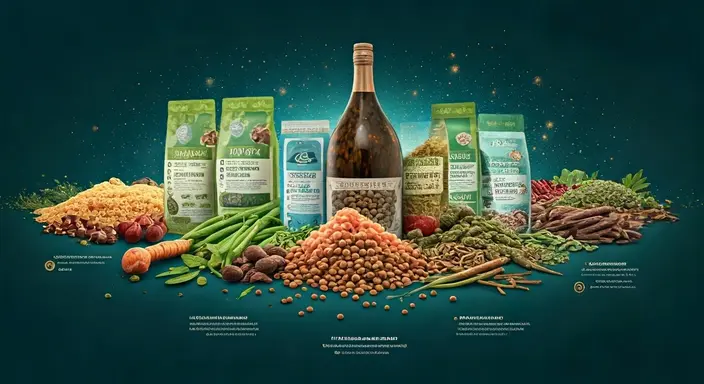
How Pet Food is Going Green Without Sacrificing Bite
Picture this: A Labrador in Tokyo crunches on a treat made from invasive lionfish threatening Caribbean reefs. A Parisian cat’s dinner bowl contains salmon raised in vertical farms using 95% less water than ocean pens. This isn’t sci-fi it’s the vanguard of a movement turning pet food into a tool for planetary repair.
The Hidden Cost of Conventional Chow
The average dog’s carbon pawprint is twice that of an SUV-driving human, largely due to meat-heavy diets. Consider these sobering stats:
- Producing 1lb of beef for pet food requires 1,800 gallons of water enough for 6 months of human showers.
- Pet food accounts for 25-30% of the environmental impacts of meat production in the U.S. via slaughterhouse byproducts.
- A single cat generates 310kg CO2/year through diet alone equivalent to a flight from NYC to Denver.
Five Innovations Turning Bowls into Climate Solutions
Bug Buffets: When Crickets Become Cuisine
Yora Pet Food now replaces 40% of traditional meat with black soldier fly larvae in their kibble. Why it matters:
- 100lbs of feed: Cattle need 2,500 gallons of water. Insects need 1.
- Protein punch: Cricket flour contains 65% protein vs. chicken’s 23%.
- Picky eater approved: 83% of dogs in trials preferred insect-based meals over beef.
From Trash to Tasty: The Upcycling Revolution
Companies are transforming food waste into premium nutrition:
- Purina’s Beyond Nature uses grape pomace (wine industry leftovers) as an antioxidant-rich cat food filler.
- Chippin upcycles watermelon rinds normally tossed despite 92% nutrient density into dog treats.
- The result: Each ton of upcycled pet food prevents 4.5 tons of CO2 emissions from rotting landfills.
Algae: The Ocean’s Superfood Secret
A startup called Algalife grows spirulina in bioreactors for pet supplements:
- Omega-3s without overfishing: Replaces fish oil from depleting sardine stocks.
- 10x more iron than spinach per gram.
- Proof point: Dogs fed algae-enhanced diets show 40% less arthritis inflammation in trials.
The Lab-Grown Meat Dilemma
Because Animals sells cultured mouse meat for cats yes, mice grown without killing a single rodent. Benefits:
- Eliminates factory farming: Uses 99% less land than conventional meat.
- Species-appropriate: Cats’ wild ancestors ate 70% of rodents.
- Hurdles: Regulatory approval pending in 12 countries; current cost: $18 per 3oz tin.
Packaging That Doesn’t Outlive Your Pet
Earth Animal’s compostable bags break down in 90 days vs. 500+ years for plastic. Meanwhile, Open Farm tracks every ingredient’s journey via blockchain scan a bag to see your chicken’s farm and carbon impact.
The Grassroots Challenge
While startups innovate, big brands lag. Only 14% of major pet food companies have net-zero commitments. Critics argue that “sustainable” labels often greenwash a 2023 study found 61% of “eco” pet foods exaggerated claims.
Your Action Plan:
- Audit protein sources: Swap one beef meal weekly for insect/algae alternatives.
- Seek certifications: Look for B Corp, Upcycled Certified, or MSC Seafood labels.
- Calculate your pet’s pawprint: Tools like the Pawprint app estimate dietary CO2 and suggest swaps.
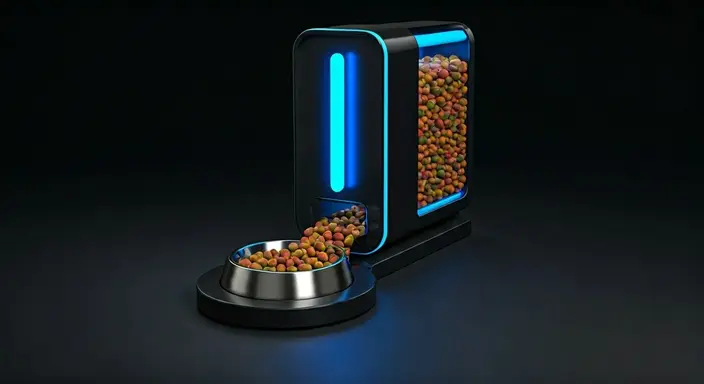
The Future of Pet Food: Technological Advancements
How 3D Printers and Smart Feeders Are Rewriting Pet Nutrition
Meet Baxter, a 12-year-old Dachshund who refused to eat after dental surgery. His owner, Claire, was desperate until her vet suggested a 3D-printed meal. Within hours, Baxter was nibbling a custom-designed, soft-textured kibble shaped like his favorite bone. This is the new frontier of pet food: where technology doesn’t just feed pets it heals them.
The Printer That Cooks Dinner
How 3D Food Printing Works
Imagine an inkjet printer, but instead of ink, it layers edible pastes made of sweet potato, insect protein, or hydrolyzed salmon. Veterinarians and startups are using this tech to solve once-hopeless challenges:
- Dental Health: Crunchy geometric shapes clean teeth; soft lattice structures aid pets with missing molars.
- Medication Delivery: Printers embed painkillers or antibiotics into chewable “cookies” disguised as bacon.
- Allergy Management: Hypoallergenic ingredients are isolated and reshaped into appealing forms for picky eaters.
Real-World Impact: A 2023 UC Davis study found 89% of cats with chronic kidney disease ate more willingly with 3D-printed, flavor-enhanced meals vs. traditional prescription diets.
The Rise of the Robo-Feeder
Gone are the clunky timers of yore. Today’s smart feeders, like Petlibro’s Palace, act as AI-driven nutritionists:
- Activity Syncing: Adjust portions if your Husky skips a hike (tracked via FitBark collar).
- Health Alerts: Detects uneaten food and texts: “Luna ignored breakfast check her glucose monitor?”
- Vet Connect: Shares real-time data with your clinic, flagging early signs of diabetes or thyroid issues.
Cost vs. Benefit: While premium models run $300+, a trial by Tufts University showed smart feeders reduced obesity-related vet visits by 34% in dogs over 5 years.
Biotechnology’s Quiet Revolution
Beyond gadgets, science is reengineering food itself:
- Precision Fermentation: Companies like Wild Earth brew protein from yeast strains engineered to mimic chicken’s amino profile no birds are harmed.
- Gene-Edited Crops: CRISPR-modified algae now produce higher omega-3s, slashing the need for fish oil in pet foods.
- Lab-Grown Liver: Because Animals cultivate mouse meat (a cat’s natural prey) in bioreactors, eliminating slaughterhouse reliance.
Ethical Crossroads: While 47% of pet owners in a 2024 survey support bioengineered food for sustainability, 33% fear “Franken-meat” risks. Transparency is key: brands like Bond Pet Foods publish third-party safety audits to ease fears.
Tomorrow’s Bowl: What’s Next?
- Food That Talks: Edible sensors in kibble could monitor gut health and send pH data to your phone.
- Mood-Enhancing Meals: Probiotics tailored to reduce anxiety in thunderstorms or fireworks.
- Zero-Waste Systems: Home printers use food scraps to create daily rations, cutting packaging waste.
Conclusion
Imagine it’s 2035. Your dog’s collar detects a spike in cortisol during a thunderstorm and dispenses a CBD-infused, 3D-printed treat from a solar-powered smart feeder. Meanwhile, your cat’s dinner grown from carbon-capturing algae in a local bioreactor arrives in packaging that dissolves into plant fertilizer. This isn’t a whimsical fantasy; it’s the logical endpoint of today’s most groundbreaking pet food innovations.
A Recap of the Revolution
The journey from kibble to cutting-edge has been driven by three seismic shifts:
- Personalization Beyond DNA: Diets tailored to microbiome health, activity levels, and even emotional states.
- Planet-First Ethics: From insect protein to upcycled meals, pet food now tackles food waste and climate change.
- Tech as a Lifeline: AI feeders preventing obesity, edible sensors monitoring health, and biotech erasing trade-offs between nutrition and ethics.
The Next Frontier: 2035 and Beyond
- Smart Homes, Smarter Pets: Integration with IoT devices will adjust diets in real time based on air quality, pollen counts, or your work travel schedule.
- Food as Medicine: CRISPR-edited ingredients could target cancer cells or repair joint tissue, blurring the line between meals and veterinary care.
- Community-Driven Ecosystems: Imagine neighborhood “pet food hubs” where kitchen scraps are exchanged for 3D-printed meals, creating closed-loop systems.
Navigating the Hurdles
Challenges remain: lab-grown meat’s scalability, the digital divide in accessing smart tech, and regulatory tangles. Yet, startups are already collaborating with NGOs to subsidize sustainable options, while blockchain tech ensures ingredient transparency.
Your Role in the Future Plate
- Start Small: Swap one traditional protein source weekly for an insect-based or plant-alternative treat.
- Demand Transparency: Support brands with third-party certifications like Upcycled Certified or B Corp.
- Embrace Tech Wisely: Use apps like Pawprint to track your pet’s carbon pawprint and set reduction goals.
Final Thought: More Than a Meal
The future of pet food isn’t just about smarter kibble it’s a mirror reflecting our aspirations for a healthier, kinder world. Every bite your pet takes can nourish their body, ease their conscience, and inch society closer to solving grand challenges. As one visionary vet put it, “We’re not just feeding pets anymore; we’re feeding the future.”


